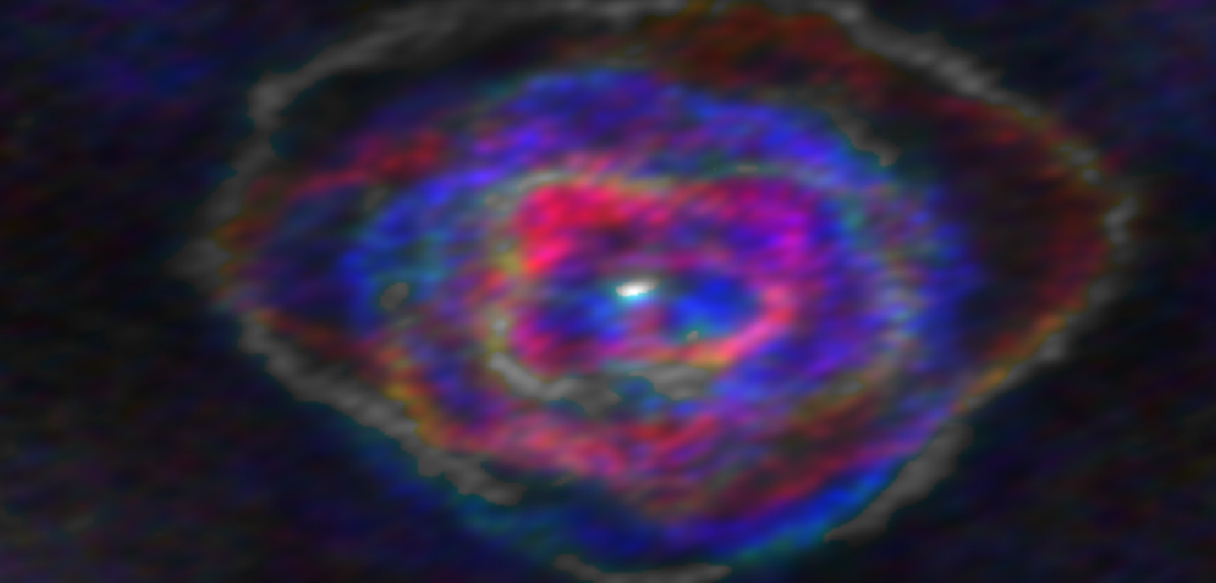Queen’s astronomer part of international team to capture stellar winds in unprecedented detail
A team of astronomers from around the world has discovered an explanation for the mesmerising shapes of planetary nebulae.

Professor Tom Millar, an astrophysicist from Queen’s, was part of the team of 35 international astronomers who uncovered this extraordinary set of observations of stellar winds around ageing stars. Contrary to common consensus, the team found that stellar winds are not spherical but have a shape similar to that of planetary nebulae. The team concludes that interaction with an accompanying star or exoplanet shapes both the stellar winds and planetary nebulae. The findings have been published in Science.
Dying stars swell and cool to eventually become red giants. They produce stellar winds, flows of particles that the star expels, which causes them to lose mass. Because detailed observations were lacking, astronomers have always assumed that these winds were spherical, like the stars they surround. As the star evolves further, it heats up again and the stellar radiation causes the expanding ejected layers of stellar material to glow, forming a planetary nebula.
For centuries, astronomers were in the dark about the extraordinary variety of colourful shapes of planetary nebulae that had been observed. The nebulae all seem to have a certain symmetry but are almost never round.
Corresponding author, Professor Leen Decin of KU Leuven said: “The Sun – which will ultimately become a red giant – is as round as a billiard ball, so we wondered: how can such a star produce all these different shapes?”
Her team observed stellar winds around cool red giant stars with the ALMA Observatory in Chile, the largest radio telescope in the world. For the first time ever, they gathered a large, detailed collection of observations, each of them made using the exact same method. This was crucial to be able to directly compare the data and exclude biases.
What the astronomers saw, surprised them. “We noticed these winds are anything but symmetrical or round,” Professor Decin says. “Some of them are actually quite similar in shape to planetary nebulae.”
The astronomers could even identify different categories of shapes. “Some stellar winds were disk-shaped, others contained spirals, and in a third group, we identified cones.” This is a clear indication that the shapes weren’t created randomly. The team realised that other, low-mass stars or even heavy planets in the vicinity of the dying star were causing the different patterns. These companions are too small and dim to detect directly. “Just like how a spoon that you stir in a cup of coffee with some milk can create a spiral pattern, the companion sucks material towards it as it revolves around the star and shapes the stellar wind,” Decin explains.
The team put this theory into models, and indeed: the shape of the stellar winds can be explained by the companions that surround them, and the rate at which the cool evolved star is losing its mass due to the stellar wind is an important parameter.
Up until now, calculations about the evolution of stars were based on the assumption that ageing Sun-like stars have stellar winds that are spherical. “Our findings change a lot. Since the complexity of stellar winds was not accounted for in the past, any previous mass-loss rate estimate of old stars could be wrong by up to a factor of 10.” The team is now doing further research to see how this might impact calculations of other crucial characteristics of stellar and galactic evolution. The study also helps to envision what the Sun might look like when it dies in 7000 million years. “Jupiter or even Saturn – because they have such a big mass – are going to influence whether the Sun spends its last millennia at the heart of a spiral, a butterfly, or any of the other entrancing shapes we see in planetary nebulae today,” Decin notes. “Our calculations now indicate that a weak spiral will form in the stellar wind of the old dying Sun.”
Professor Tom Millar from Queen’s, who is a specialist in the chemistry of these stellar winds, is a member of the international team that has spent the past two years obtaining and analysing the enormous quantity of observational data that the project has generated. He said: “Scientists have puzzled about the origin of planetary nebulae for over 100 years – how do their exotic shapes arise from spherical stars? Our new results show that every star we have observed with the ALMA radio telescope is losing its outer envelopes in a non-spherical manner due to the presence of a nearby orbiting companion body. Our current research is now aimed at detecting these companions directly and determining whether they are other stars or massive planets like Jupiter.”
The study is part of the ATOMIUM project, which aims to learn more about the physics and chemistry of old stars.
Media
Media enquiries to Sarah Beveridge at Queen’s Communications Office on 07795 353874 or email: s.beveridge@qub.ac.uk.